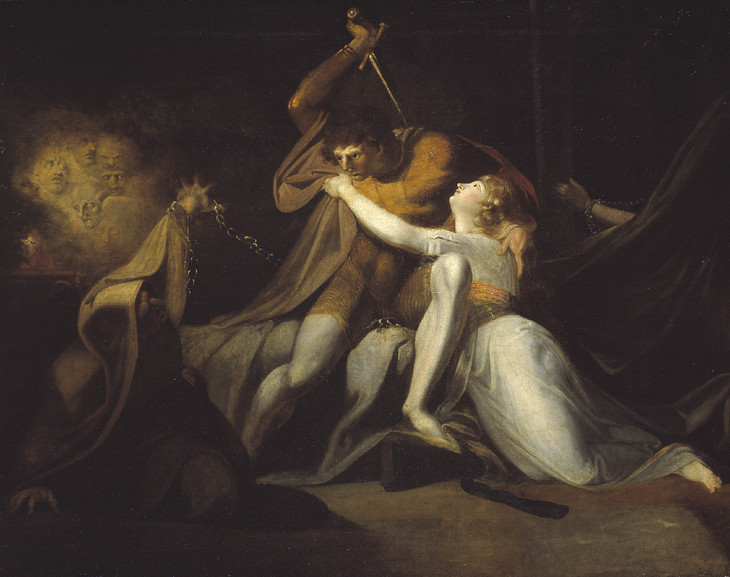Henry Fuseli Percival Delivering Belisane from the Enchantment of Urma exhibited 1783

Henry Fuseli 1741–1825
Percival Delivering Belisane from the Enchantment of Urma exhibited 1783
Oil paint on canvas
support: 991 x 1257 mm; frame: 1248 x 1510 x 108 mm
Tate N05304
Presented by the Art Fund 1941
Henry Fuseli 1741–1825
Percival Delivering Belisane from the Enchantment of Urma exhibited 1783
Oil paint on canvas
support: 991 x 1257 mm; frame: 1248 x 1510 x 108 mm
Tate N05304
Presented by the Art Fund 1941
Conventionally, history paintings were based on a literary or historical source familiar to educated viewers. The artist’s role was to select from the story a crucially significant moment that would convey a sense of nobility and moral certainty. The success of this strategy of course depended on the viewer knowing the story, and so knowing what would happen next. Fuseli, however, admitted that he invented the saga of Percival and Belisane shown here. His paintings tended to emphasis spectacle and sensation rather then the noble themes and moral lessons which Reynolds’s view of the ‘great style’ demanded.
How to cite
Henry Fuseli, Percival Delivering Belisane from the Enchantment of Urma exhibited 1783, in Nigel Llewellyn and Christine Riding (eds.), The Art of the Sublime, Tate Research Publication, January 2013, https://www
